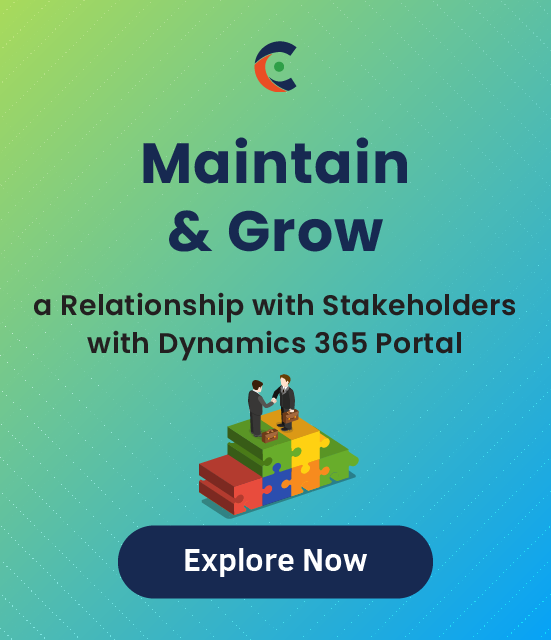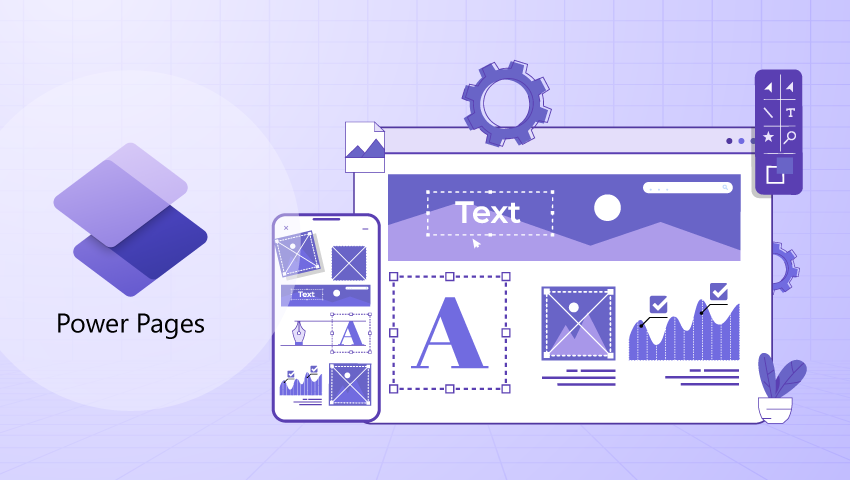Over the years, there has been a lot of buzz about and around portals. They are useful in many ways because of their robustness, scalability, and the ability to fit a wide range of features.
If you don’t know what portals are, then here’s a quick definition, according to Wikipedia, “A web portal is a specially designed website that brings information from diverse sources, like emails, online forums, and search engines, together in a uniform way.”
When compared with a CRM, we can say that portals work as a bridge between CRMs and websites and are useful to securely provide access to necessary data to employees, customers, vendors, or any other parties involved.
There are various types of portals available in a market that helps companies serve their customers better.
Today thousands of companies try their hand at creating these portals but amongst them, Microsoft is a market leader.
In 2015, Microsoft bought an application, back then known as Adxstudio portals. Today it is available in the form of an add-on subscription for Microsoft Dynamics 365. Microsoft supports cloud and mobile, so the portal has become one of the important add-ons of Dynamics 365 with its flexibility and functionality. You can administer a portal using Microsoft Office 365 as well.
If you are still discovering the solution, then check out our blog post on the types of Dynamics portals: Types of Dynamics 365 Portal Add-ons
No matter how great of a solution this is, there are certain limitations with which it operates and it’s imperative to understand this side of the solution as well.
4 Dynamics 365 Portal Limitations
The additional portal will increase the cost:
Dynamics 365 portal provides only one portal free. If you want to use more than one portal, then you need to pay extra. The cost of each of these portals is on the basis of the page views.
Cannot handle cache:
When you make any changes in the users’ data on the CRM side then those changes are not reflected directly. You will need to make changes manually, again, clear the cache and then changes will be reflected.
No on-premise support:
Dynamics provides cloud and server base support for its products. But, currently, they focus more on the cloud-first solution. Hence, they have made the portal as a cloud-based solution.
You have to rely only on cloud-based solutions for the Dynamics portal. Of course, it brings no headache of investing in servers but you will need to invest in cloud services.
No server code adjustments:
Dynamics 365 portals come with lots of complexities. One such restriction they put is on changing the architecture of their products.
Let’s say, you are trying to fetch the data of your customers using the name as an entity. Then you can change the name entity of your customers to another entity like phone number or address.
But, you can’t change the architecture of the way this entity is being called. In simple terms, the way that particular function is called. Hence, we can say that the architecture of portals is not so robust or flexible, and it doesn’t allow developers to change it.
Dynamics 365 portal comes with its merits and demerits. In spite of these issues, even today, it stands way ahead in the field of portals. To sum up, I can say Dynamics 365 portals are worth using if you can work around its limitations.
Dynamics 365 Portal Alternative
If it’s a headache for you to figure out working around these limitations, then there are many third-party portals available in the market. One such is our own product: Dynamics 365 WordPress Portal. Built by developers with 10+ years of experience in this field, this solution has the robustness and security of Dynamics 365 as well as the flexibility of WordPress CMS which overcomes the main limitation of the default Dynamics portal. It is also a preferred Microsoft solution and is built by Microsoft certified developers.
Our Features:
- Role-based accessibility
- Custom and default module support
- Intuitive dashboard
- Contact hierarchy management
- Case deflection
- Extensive knowledge base
and more.
All product and company names are trademarks™, registered® or copyright© trademarks of their respective holders. Use of them does not imply any affiliation with or endorsement by them.




